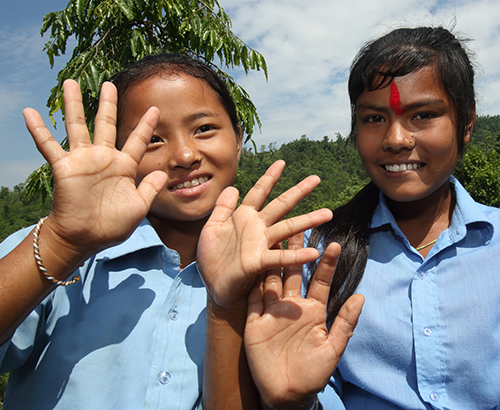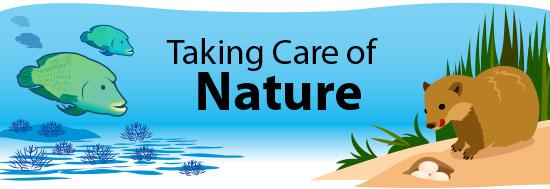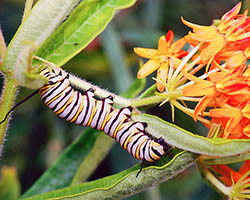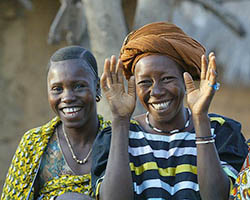show/hide words to know
Non-governmental Organization: (NGO) a group or business that is separate from a government or a for-profit business. These groups are often created by local citizens and run by volunteers.
Ecosystem Management Organizations
A few activists in a small city may work to save monarch butterflies. Or maybe a large group of people are exploring how to conserve water during a drought. People in different cities or countries take different approaches to ecosystem management. Organizations can be more focused on conservation of species, while others deal with water, land, or people.

City ecosystem managers might work to find people affordable housing or clean living conditions. Image by Peter Whatley.
To better understand what ecosystem management involves in the real world, here are three organizations that are great examples. Each group works with the environment to accomplish some kind of goal, or mission.
Housing Help
In Portland, Oregon, a non-governmental organization called “Community Partners for Affordable Housing” is mainly focused on helping people in need find housing. On each of their properties, they teach their residents different ways to conserve resources and become more connected to the Oregon environment.
One trick the residents do to save water is to put a bucket under the showerhead in the shower. Before showering, while they wait for the water to get hot, they catch that extra water. They then use the water for outdoor plants and gardens. This is just one of the ways Community Partners for Affordable Housing residents and staff save natural resources.
Battling for Butterflies
Monarch Watch organization educates the public about monarch butterflies. These butterflies are important pollinators that travel great distances over part of the species' migration every year. The monarch butterflies need the milkweed plant to live and lay eggs on.
Monarch Watch suggests that people in certain areas of the country plant more milkweed in their gardens to give the monarchs more usable habitat. The people then get to enjoy monarchs visiting their yards. That is an example of an interaction that is positive for both humans and butterflies.
Building Environmental Skills
Lastly, Dr. Jamie Bechtel is a marine biologist and founder of a non-profit called New Course. As a marine biologist, Dr. Bechtel was aware of the effects that people have on marine habitats and worked extensively with local fishermen and farmers to improve fishing practice. It was through her partnership with local communities that she then realized how the ecosystem affects people- especially women.
New Course is the non-governmental organization (NGO) that Dr. Jamie Bechtel co-founded to involve women in ecosystem management. In many cultures, women are in charge of washing clothes, feeding the children, and growing the food for their homes. To do these tasks, women must find water, gather firewood to build fires, and tend to crops within their natural ecosystem.
New Course helps women from many countries and cultures learn skills to better use their environment when doing these tasks.
New Course is an example of an international NGO. Dr. Bechtel works in Seattle, Washington, but the people she helps are on other continents like Asia and Africa. Just like ecosystems, each community is unique and has different challenges. New Course has found that the most important part of helping a community is to communicate and work directly with the people involved.
These are just a few of the many organizations out there that are concerned with protecting the environment and ecosystem services. If you have interest in becoming involved, try to learn about some of the organizations in your area that are gathering to make a difference.
Additional images via Wikimedia Commons. Image of Nepali girls by Department of Foreign Affairs and Trade.
View Citation
Bibliographic details:
- Article: Ecosystem Management Organizations
- Author(s): Kayna Lantz, Maria Eller, Annika Andersen
- Publisher: Arizona State University School of Life Sciences Ask A Biologist
- Site name: ASU - Ask A Biologist
- Date published: August 31, 2015
- Date accessed: April 17, 2024
- Link: https://askabiologist.asu.edu/ecosystem-management-organizations
APA Style
Kayna Lantz, Maria Eller, Annika Andersen. (2015, August 31). Ecosystem Management Organizations. ASU - Ask A Biologist. Retrieved April 17, 2024 from https://askabiologist.asu.edu/ecosystem-management-organizations
Chicago Manual of Style
Kayna Lantz, Maria Eller, Annika Andersen. "Ecosystem Management Organizations". ASU - Ask A Biologist. 31 August, 2015. https://askabiologist.asu.edu/ecosystem-management-organizations
Kayna Lantz, Maria Eller, Annika Andersen. "Ecosystem Management Organizations". ASU - Ask A Biologist. 31 Aug 2015. ASU - Ask A Biologist, Web. 17 Apr 2024. https://askabiologist.asu.edu/ecosystem-management-organizations
MLA 2017 Style

Two girls show off their clean hands near where a water supply was established. NEWAH WASH is an NGO devoted to providing clean water and conditions to people in Nepal.
Be Part of
Ask A Biologist
By volunteering, or simply sending us feedback on the site. Scientists, teachers, writers, illustrators, and translators are all important to the program. If you are interested in helping with the website we have a Volunteers page to get the process started.










